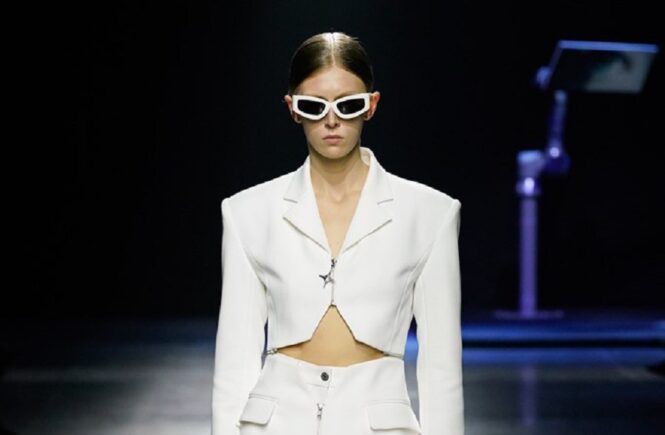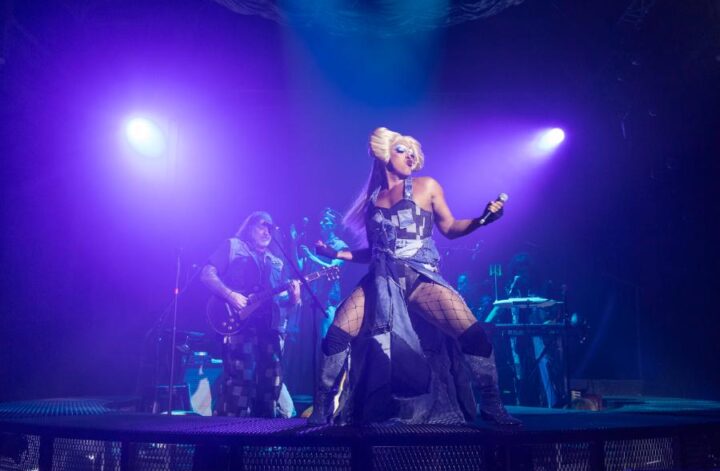ANNAKIKI Autumn/Winter 2022
A Cybernetic Future Where Imagination and Matter Coexist
“Cyborg is not made of clay, and thus it is impossible to return dreams to dust.”
–Donna Haraway
In 1985, philosopher Donna Haraway published an article entitled “The Cyborg Manifesto: Science, Technology, and Socialist-Feminism in the Late Twentieth Century,” in which she described the “cyborg” as a “creature of the post-gender world,” meaning that it blurs the traditional boundaries of gender, body, and identity, and is both a fictional creature and a creature of social reality. At present, the technological revolution and the high level of development of modern production are gradually forming a new Taylorist idyllic world. It blurs the boundary between human and nonhuman; pure flesh will no longer exist, thus leaving behind all external definitions and gradually returning to the essence of human.

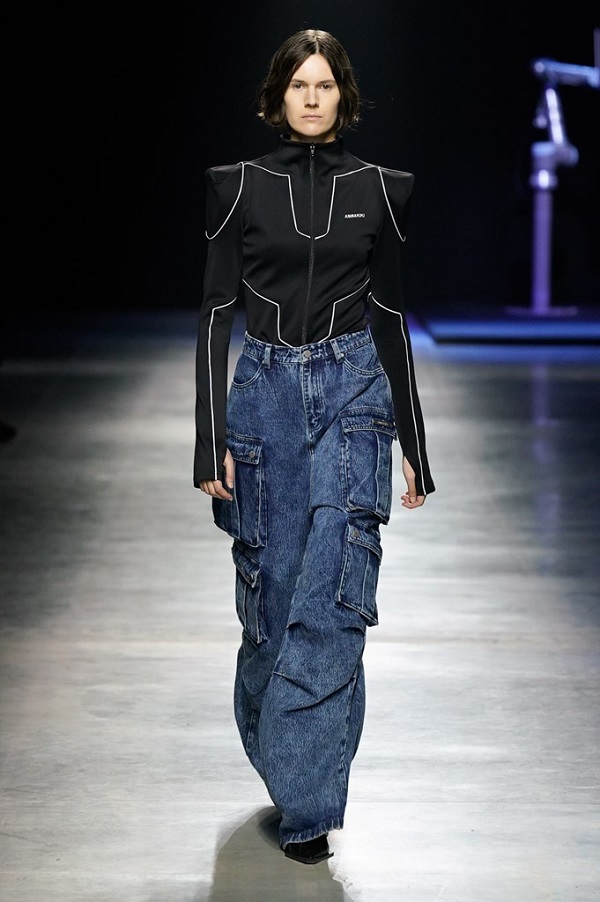
Inspired by the expression of Cyborg, ANNAKIKI’s Creative Director Anna Yang draws inspiration from the science fiction movie Alita this season, inspired by the female protagonist Alita who has a mechanical body and remembers the meaning of Cyborg to human beings. She suggests that “Cyborg presents the idea of human-machine symbiosis, and its more profound meaning is that it allows for a longer continuity of life.”
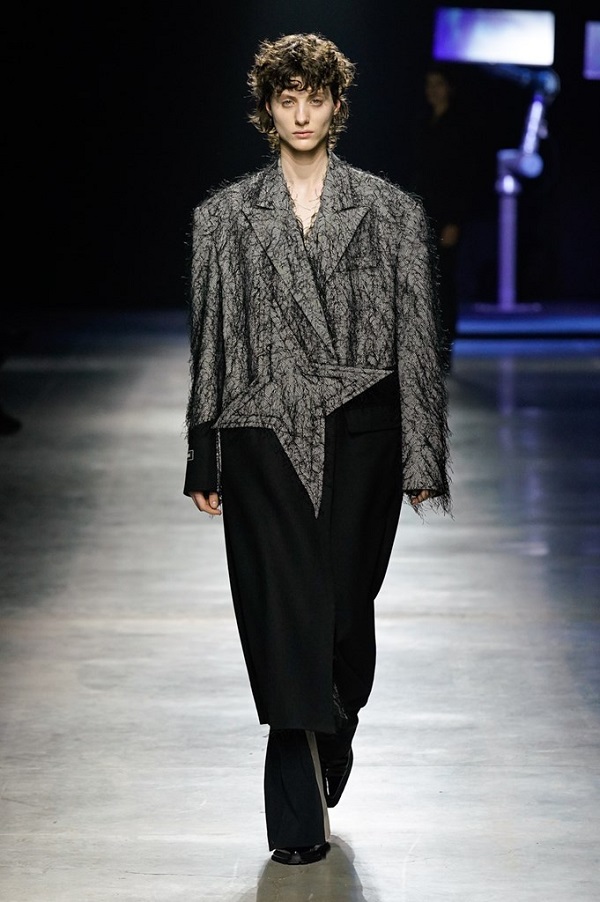
Cyborg is about evolution, not regeneration. It is the ability to enhance living organisms through artificial intelligence technology, as the term suggests: In the 1960s, scientists Manfred E. Clynes and Nathan S. Kline had the bold idea that humans surviving in an alien environment could be enhanced through the combination of the human body with machinery or drugs This would help form “a complete human-machine system,” combining the words “cybernetics” and “organism” to create the term, Cyborg.

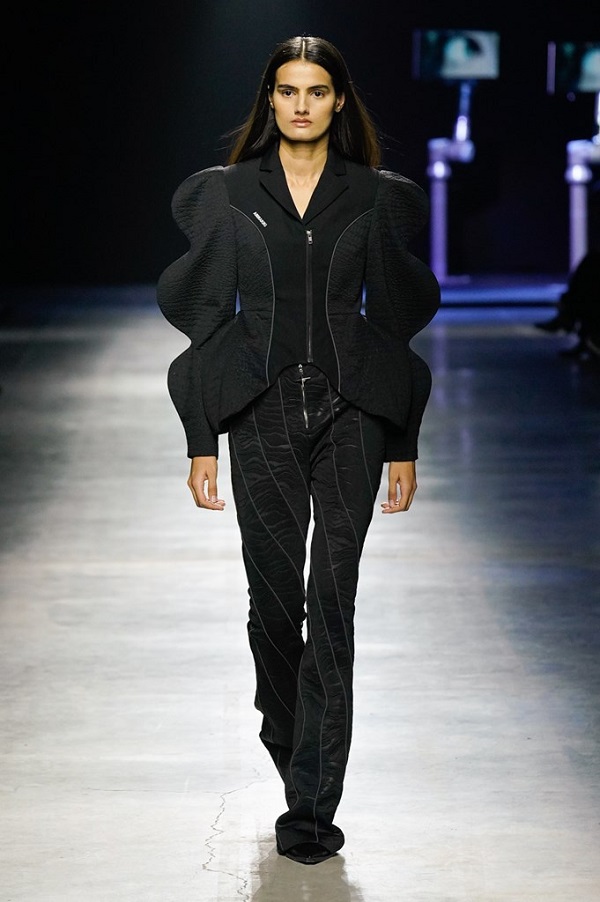
Anna Yang believes that while humans are dependent on powerful technology, they are also worried about the future of technology backfiring on them. She explains, “This is not anti-human, but can enhance the senses through mechanical parts, more sense of our living space, so as to better protect and repair the natural environment and living space that has been greatly damaged by humans.”
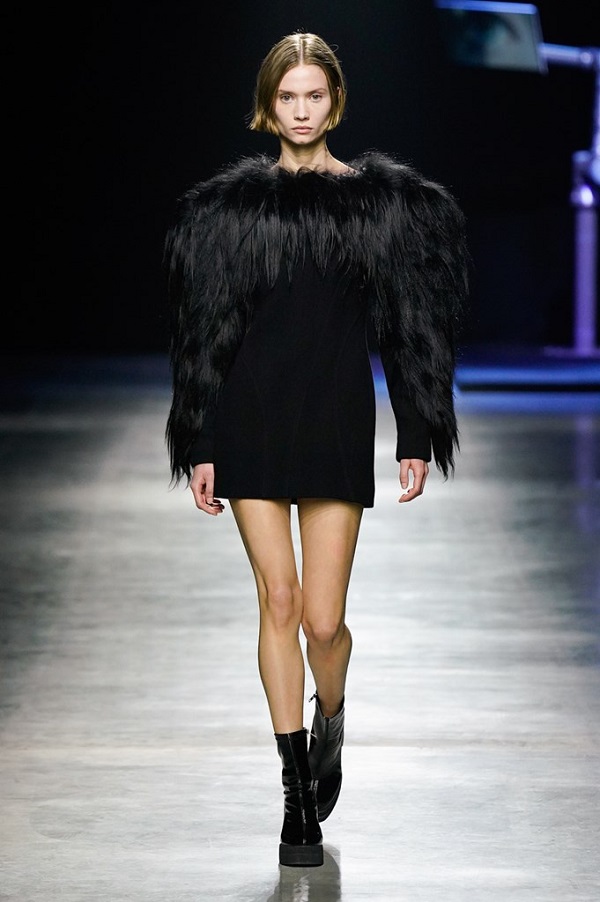

Thus, Anna Yang uses creative design and unique aesthetics as a narrative ground to create a “posthuman” imagination. As the main clue for enrichment, the elements inspired by human cells, biological genes, DNA and brain cells are boldly transformed, and electronic technology elements such as acid, electronic pulses, circuit boards and functions are implanted into the body and blossomed in the manifest design, as if a cybernetic body transformation is taking place in the present; the repeated overlapping of cell patterns stimulates our imagination of human genetics. The presentation of surrealistic human organ prints invariably gives another possibility of human being undergoing cybernetic transformation: when the body is transformed, can human beings still be called “human”?

This season, ANNAKIKI continues the brand’s iconic cross metal meteor and classic 3D wave sleeve shape, with a new shape through intricate craftsmanship. The super-long silhouette is like an enhanced version of the human body, seen in coats, capes and sports dresses blurring gender and ANИAKIKI body curves, stripping people of their traditional sexuality and returning them to their essence. Is it coexistence, or is it conflict? When alien visitors come to Earth, do we accept or resist them? In the center stage of our runway this season “Returning the Gaze” – an cyber-physical Robotic Installation by Los Angeles based artist Behnaz Farahi* in collaboration with Universal Robots was put together. It was designed to have 4 robotic arms, each holding a monitor, these arms will become an extension of the model who is now a cyborg, watching everything that is happening in the runway and the audience through her enhanced viewing abilities.

“Elon Musk once said, we are already cyborgs, we have a machine extension of ourselves in the form of our devices, it has enhanced our abilities to perform many tasks” Behnaz explains, “To attend a fashion show is to be seen by others, as much as to see the event itself. But what would happen if the models in the fashion show were to stare back at the viewer? What uncanny feelings would this evoke? And what strategies of resistance would it promote? This installation is an exploration of this scenario, as the gaze of the model is directed back at the viewer.”
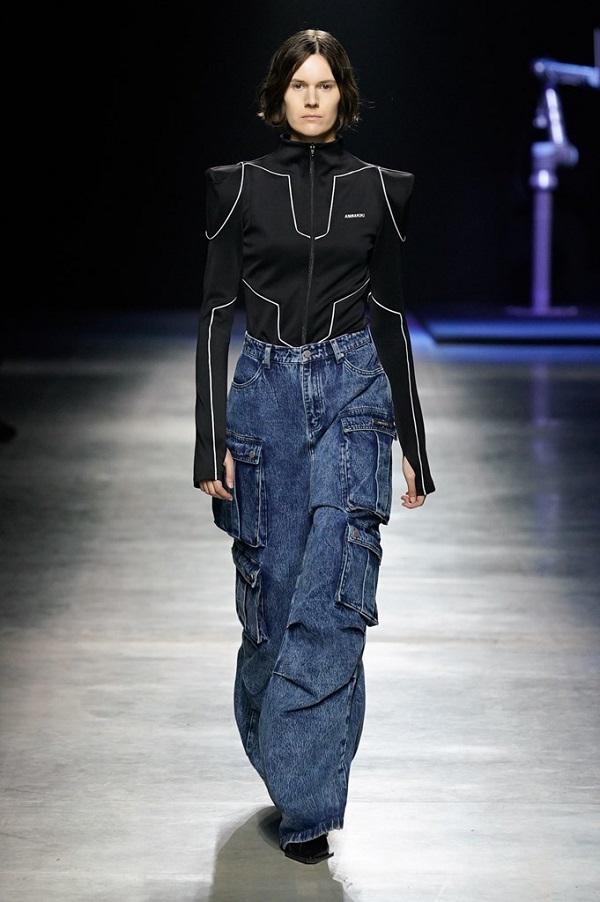
The essence of Cyborg is to encode human beings, exploring the emerging “creatures” after the intimate coupling of organisms and machines, hovering at the edge of virtual and reality, and condensing the image of imagination and material reality. If one day the body is separated from the mind, and technology becomes the subject of the construction of the human body, we may be allowed to have a new identity outside of the physical reality – a virtual identity built on the real existence – which is also another kind of “evolution”. With this in mind, Anna Yang launched a “Metaverse” project, a series of NFT virtual fashions coded from the material existence of ANNAKIKI’s Fall/Winter 2022 collection, creating a unique identity label for an emerging human being in another parallel dimension.
“Whichever direction post-humanity evolves, I hope that the way these evolutions take place will lead to a reflection on the morality of the human self, as a way to reconceptualize our relationship with the natural environment,” explains Anna Yang.

To integrate real robotic technologies into the show concept, ANNAKIKI has collaborated with Universal Robots Italy for an exclusive partnership this season. “Fashion is a sector of great inspiration for us,” comments Gloria Sormani, Country Manager for Universal Robots Italy. “It is a territory of experimentation and great creativity, two attitudes fully expressed also by collaborative robotics: we are therefore very pleased that ANNAKIKI has chosen our robots for the show. When technology meets the human genius, surprising things happen and with UR robotics they can also happen outside a factory.”
Behnaz Farahi* Trained as an architect, Behnaz Farahi is an award winning designer and critical maker based in Los Angeles. She holds a PhD in Interdisciplinary Media Arts and Practice from USC School of Cinematic Arts. Currently she is an Assistant Professor at the Department of Design, California State University, Long Beach. Farahi has won several awards including the Cooper Hewitt Smithsonian Design Museum Digital Design Award, Innovation By Design Fast Company Award, World Technology Award. She is a co-editor of an issue of AD, ‘3D Printed Body Architecture’ (2017) and ‘Interactive Futures’ (forthcoming).
Melbourne My Style Accredited Media 2022 MFW

